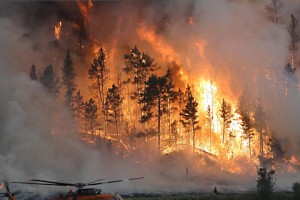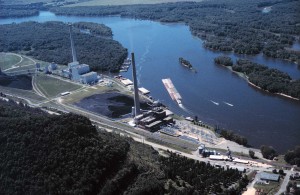
Department of Energy Reveals Climate Change Risks to Energy Sector in New Report
The steadily worsening effects of climate change – drought, floods, heat, rising sea levels, and severe storms – pose serious threats to the U.S. energy sector. The U.S. Department of Energy (DOE) details this issue in their newly published report, “U.S. Energy Sector Vulnerabilities to Climate Change and Extreme Weather.”
Climate change affects the entire United States, but with varying results dependent on location and season. Air temperatures have increased by about 1.5°F in the past century and are forecasted to continue to increase by almost 2.5°F by 2050.
Related to this, warmer temperatures decrease sea ice extent by as much as 15% for every 2°F of warming, according to a 2012 Environmental Protection Agency (EPA) report. Warmer temperatures will also affect the frequency and intensity of wildfires, which are projected to increase by 54% by the middle of this century. Even today, the length of the wildfire season in the Western U.S. has increased by  nearly 80 days.
nearly 80 days.
Decreasing water availability is another result of climate change in the United States, despite an average increase in total annual precipitation by 5.9%, due mostly to higher predicted rainfall in the Midwest and Eastern U.S. However, the American Southwest will see significant decreases in precipitation, exacerbating current drought conditions.
Sea level rise and flooding are the final components of climate change discussed by the Department of Energy’s report. The United States experiences an approximate rate of sea level rise of 0.14 inches/year. In the future, flooding events are expected to increase in frequency and intensity and in coastal regions; the likelihood of “once-in-a-century” flooding events is expected to double.
Several examples of potential challenges and implications for various energy sectors are provided below:
- Thawing Arctic permafrost may damage oil and gas infrastructure, such as pipeline foundations and onshore facilities.
- Increasing air and water temperatures may reduce thermoelectric power plant efficiencies and available production capacity.
- Decreasing water availability will decrease production of bio-energy sources
- More frequent and severe wildfires will increase risk of physical damage and decreased transmission capacity of the electric grid
- Increasing air temperatures will increase electricity demand for cooling, while decreasing oil and gas demand for heating.
The Department of Energy outlines both current activities for climate change adaptation, as well as, major opportunities in the future.
In the field of oil and gas exploration and production, some energy companies are reusing hydraulic fracturing fluid to reduce water requirements. Power plants are using dry-cooling systems to reduce their water requirements, too. In addition, urban planners are designing buildings with cool white roofs, which lead to an average savings of $0.36/m2. By retrofitting the majority of urban, commercial roofs, buildings can save upwards of $735 million/year.
For the future, major opportunities for adaptation include developing technologies to increase the resilience of infrastructure related to oil and gas production, bio-energy production, and electrical grid systems.
Furthermore, improving design standards and protective measures for smart grids against wildfires and flooding, and better placement of power substations in locations not susceptible to storm surges will all be beneficial in adapting to climate change.
In all, the new report published by the Department of Energy on American energy sector vulnerabilities to climate change provides innovative solutions and lays out the risks to mitigate the challenges. While much more research into the magnitude and variability of the threat remains, DOE’s new report serves as an important step in understanding and planning for the threat of climate change on America’s national security.







[…] Department of Energy Reveals Climate Change Risks to Energy Sector in New Report […]
[…] Department of Energy Reveals Climate Change Risks to Energy Sector in New Report […]